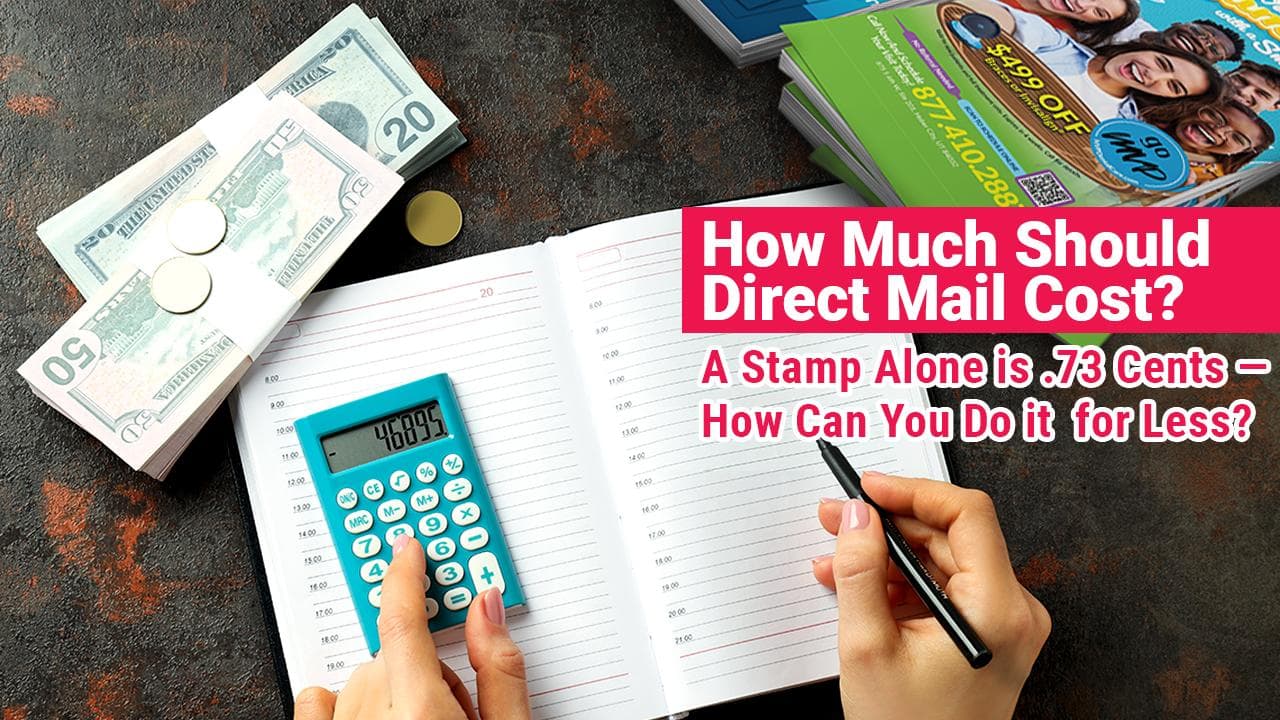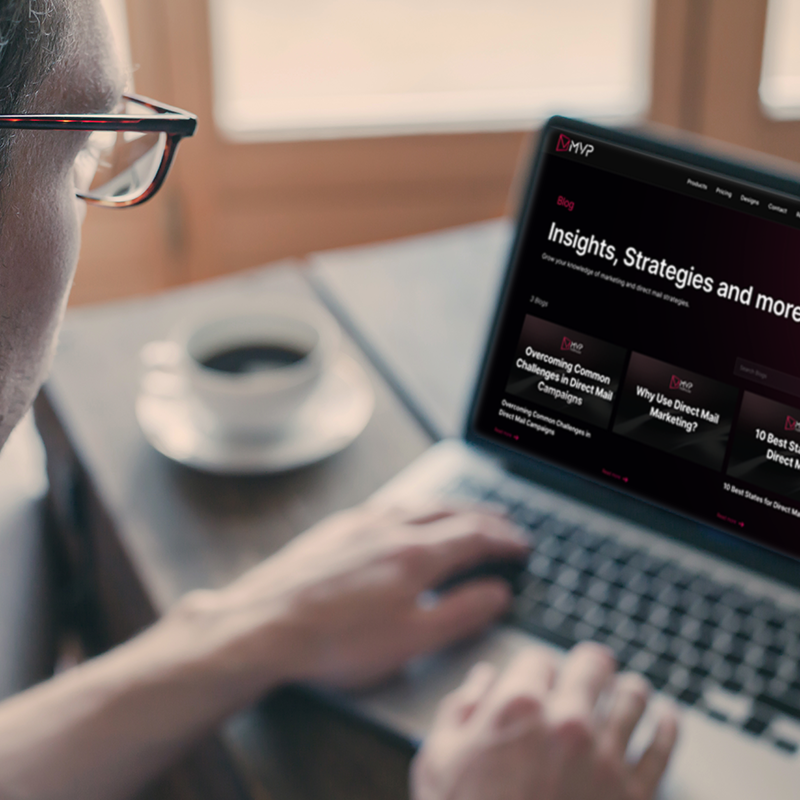How Much Does Direct Mail Cost?
How much does direct mail cost? Get real pricing examples, hidden cost tips, and ROI strategies to cut waste and convert more. Maximize every dollar now.

Direct mail remains a key player in marketing strategies, despite the digital age's dominance. Its physical form fosters a unique connection with recipients, a feat digital methods often miss. This guide looks into the costs involved in direct mail campaigns, aiding your budgeting and planning.
We start by examining the upfront costs, design, materials, and printing. These are crucial, varying with design complexity and material quality. Then, we consider postage and handling, affected by mail weight and travel distance. Here, you'll find tips to reduce postage costs while maintaining your message’s effectiveness.
We also highlight the role of targeting and personalization. Quality data can cut costs by boosting campaign success. By focusing on specific demographics and customizing messages, you improve response rates and ROI.
Lastly, we address often ignored costs like failed deliveries and the benefits of testing various campaign versions. This guide not only clarifies direct mail costs but also offers strategies to stretch your budget and meet marketing goals. With these insights, direct mail can significantly contribute to your marketing success.
What Influences Direct Mail Costs?
The cost of direct mail can vary widely based on several key factors. Each element of a direct mail campaign contributes to the overall expense, from the design and production of the mailpieces to postage and distribution. Here’s a breakdown of the primary components that determine the cost of direct mail:
- Design Choices: Hiring professional designers costs more upfront. Yet, this can mean better designs that really hit the mark with your audience, boosting responses. Professionals make sure everything, from fonts to layouts, work together to grab attention and deliver your message effectively. On the flip side, DIY designing saves money initially but might lack polish. This can hurt the campaign’s impact if not done well.
- Printing Considerations: Choosing the right materials is key for direct mail. Opting for premium paper and top-notch inks raises costs but adds a lot of value to your mail, helping it pop in a full mailbox. Full-color prints, although pricier than black and white, catch the eye faster and make your message stick.
- Mailing List: Buying a mailing list can be pricey but targeting a specific audience can make it worthwhile. A good purchased list sharpens your targeting and can improve conversions, as people are more likely to respond if they’re interested. Building your own list takes time and needs regular updates. However, it lets you build stronger connections and could lead to better loyalty and responses because of its personalized touch.
- Postage Strategies: Using bulk mailing rates from services like USPS cuts down your cost per mail piece. This helps manage bigger campaigns and extends your budget. Bulk rates are good for both standard and first-class mail, letting you choose between cost and delivery speed based on your needs and budget.
Detailed Costs Breakdown
Understanding the costs associated with each component of direct mail will help you make informed decisions that align with your marketing budget and objectives.
Design Costs: A Crucial Piece of Your Direct Mail Strategy
Designing your direct mail piece is key. You can do it two ways: in-house or hire a pro. Each has its pluses and minuses.
In-House Design
Going in-house means you're in charge. If your team has the chops, it might cost less. Plus, your crew gets your brand and can make quick changes.
Hiring an External Designer
A pro designer adds a new twist and knows what grabs people's attention. They charge $50 to $200 an hour, depending on how complex your needs are. If you want something fancy, it'll cost more.
Cost vs. Quality
Think about what you'll get back from your investment. A great design can mean more people paying attention. It's all about finding the right balance between spending and getting more responses.
Printing Costs
Printing expenses for marketing can really swing. It mostly depends on your campaign's reach and your specific choices in materials and techniques. Here’s a simpler breakdown to guide your budgeting:
- Cost Per Item: This factor hugely influences your budget. Piece prices might hover between $0.30 and $2.00. Several things shape this cost:
- Amount: Ordering big quantities? You'll likely cut costs per item thanks to bulk discounts. But, watch your estimates. It's tricky not to overbuy.
- Paper Type: Your choice here impacts both looks and price. Richer, thicker papers bump up costs but can make your materials look luxe and last longer.
- Inks and Finishes: Choices like metallic or fluorescent inks and different finishes (think matte or glossy) can make your stuff pop. But remember, they add to your print bill.
Getting these details right helps manage costs while aligning with your campaign’s aims and budget. This way, you spend wisely and still make a splash with quality materials that truly reflect your brand’s vibe.
Mailing List Rental
Renting a mailing list can be a smart move. You want to reach the right people, right? Costs vary. You might pay between 5 and 30 cents per contact.
Why the difference? It's about quality and detail. A simple list with just names and emails costs less. But if you need specifics like age, income, or buying behaviors, the price goes up. This kind of detail helps you send messages that resonate.
Also, consider where the list comes from. Top-notch providers with up-to-date data charge more. But remember, investing in a good list could mean better results for your marketing efforts.
Postage Costs
Size, Weight, and Postal Options Direct mail can be pricey. Let’s unpack why and see how you can manage these costs.
- Size and Weight Matter: Bigger, heavier mail costs more. It’s simple. More size and weight mean more money for shipping. Think about this when planning your budget.
- Mail Types: Standard vs. First Class Here’s the deal with mail types:
- Standard Mail is cheaper and slower. Use it when your timeline is flexible. It’s great for bulk mail but slow on delivery.
- First Class Mail costs more but delivers faster. It’s perfect for urgent stuff. You get quick delivery and some nice perks, like returns for undelivered mail.
Choosing the right mail type affects both costs and how well your campaign works. You have to weigh the need for speed against your budget.
Getting smart about these choices helps you make the most of your direct mail efforts without overspending.
You can look up our pricing to know more about how much direct mail costs.
Understanding Postage in Detail
Postage isn’t just about sticking stamps on envelopes. It’s about managing costs, which vary with postal rates and mail characteristics. Staying updated with rate changes is crucial for cost control.
Bulk Mailing Benefits
- Save Money: Send more, pay less per item. Ideal for big marketing drives, it can significantly cut costs.
- Faster Delivery: Bulk mail gets processed quicker than regular mail. This speed is vital for keeping materials timely and impactful.
- Better Tracking: Bulk services come with sophisticated tracking and management tools. These are key for marketers needing to track deliveries and assess campaign effectiveness, helping refine future strategies.
Calculating Direct Mail ROI
When investing in direct mail campaigns, understanding the return on investment (ROI) is crucial to assess effectiveness and justify marketing budgets. Direct mail ROI can be influenced by several factors including the quality of the mailing list, the design and content of the mail piece, and the call to action.
Key Metrics for Measuring Direct Mail Success
- Response Rate: This metric measures how many recipients contacted you after receiving your mail. Typically, a 2-5% response rate is good. But, high-performing campaigns use detailed insights to do even better.
- Conversion Rate: It shows how many people who responded actually completed a desired action, like buying something. This metric helps understand how well your mail worked.
- Cost Per Acquisition (CPA): This tells you how much you spend to gain a new customer through your mail campaign. Calculate it by dividing total campaign costs by the number of conversions. It’s key for checking if your campaign is financially worthwhile.
- Lifetime Value (LTV): LTV predicts the total profit a single customer can bring during their relationship with your business. It’s crucial for ensuring the costs of acquiring a customer are less than the profit they’ll bring.
- Strategic Insights: By keeping track of these metrics, you can see how well your campaigns are doing and find ways to improve. This lets you target better, cut costs, and increase profits.
Enhancing Direct Mail ROI
Direct mail is still a strong option for marketers. When you use it wisely and creatively, you can really improve your ROI. Here’s how to make your direct mail efforts pay off even more:
- Simple Targeting and Personal Touches: To hit the mark, use data insights to find your perfect audience. Look at behaviors and deeper data, not just basic stats. Make your mail feel personal. More than just using names, speak directly to their wants and needs. This tailored approach really ramps up responses.
- Mix it Up with Other Channels: Direct mail's power grows when paired with digital efforts. Link your paper mail to emails, social posts, or web pages. A unified strategy across channels keeps your brand in the loop and engages people repeatedly. For example, a QR code on a flyer can open up a customized web page, connecting offline with online seamlessly.
- Keep Testing and Tweaking: Marketing always changes, so keep experimenting. Use every mail drop as a chance to learn. Try A/B testing with different layouts, texts, or times to see what works best. Track your results carefully and keep tweaking for better outcomes. What worked before might not work now, so always be ready to innovate.
Real-World Cost Examples
To give you a clearer picture of what you might expect to spend on your direct mail campaign, let's consider some real-world scenarios and their associated costs:
Scenario 1: Small Business Local Campaign
- Volume: 1,000 pieces
- Design: $300 (in-house design)
- Printing: $500 (postcards at $0.50 each)
- Mailing List Rental: $200 (local area, highly targeted)
- Postage: $450 (bulk rate at $0.45 each)
- Total Cost: $1,450
- Cost Per Piece: $1.45
Scenario 2: Mid-Size Business Regional Campaign
- Volume: 5,000 pieces
- Design: $1,000 (professional designer)
- Printing: $2,500 (brochures at $0.50 each)
- Mailing List Rental: $1,250 (broader regional list)
- Postage: $1,750 (bulk rate at $0.35 each due to higher volume)
- Total Cost: $6,500
- Cost Per Piece: $1.30
The above examples show how scale, design, printing, and distribution choices influence costs and cost per piece. Understanding these factors helps businesses. They can plan and execute direct mail campaigns. These campaigns effectively reach audiences and yield tangible results.
Strategies to Reduce Direct Mail Costs and Enhance Effectiveness
Let's wrap up our guide on direct mail costs. Want to cut costs and boost your campaign's impact? Here are some final tips. These strategies aim to maximize your direct mail returns.
Optimize Postage and Delivery
- Pre-sorting Magic: Just sort your mail by ZIP code before sending it off. This means lower postage rates because it's easier for the post office. Great for anyone sending a lot of mail!
- Cut the Bulk: Play around with your mail's size and weight. Smaller, lighter packages cost less to send. Why not swap a box for a padded envelope?
Simplify Your Designs
- Template Power: Use templates. They make design quick and keep your brand looking sharp. Plus, you'll save cash by cutting down on designer fees.
- Print on Demand: Get your own printers. It's a big cost upfront, but you'll save time and money later on by not relying on outside printers.
Tech-Driven Targeting
- Data Deep Dives: Data analytics help you find the best prospects. It’s smart mailing, you waste less and could earn more.
- Personal Touch with VDP: Variable Data Printing lets you personalize each mail piece. It’s a simple tweak that could really up your response rates.
Conclusion
Direct mail remains a potent tool in the marketer’s arsenal, capable of delivering personalized content directly into the hands of your target audience. While the costs associated with direct mail can be variable, understanding these expenses in detail helps in planning and executing a campaign that not only fits your budget but also achieves your desired outcomes.
Effective direct mail campaigns require a balance between creativity, strategic planning, and cost management. By focusing on each component from design and production to mailing and postage, you can optimize your direct mail efforts to yield the best returns.
Remember, the goal is not just to reach your audience but to resonate with them, prompting action that benefits your business.
Are you ready to take your direct mail campaigns to the next level? Visit MVP Mailhouse today to explore how our all-inclusive, transparent pricing can help you achieve your marketing goals without any hidden costs.
From design to delivery, we handle it all, ensuring your direct mail reaches its target effectively and efficiently. Let us help you make your next direct mail campaign a resounding success!
Tags
Frequently Asked Questions
Related blog



